17IPS20
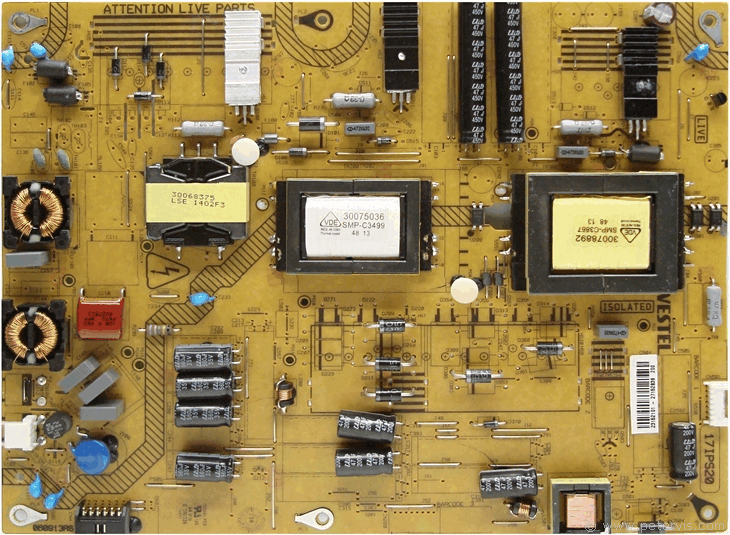

The 17IPS20 is a power supply board for televisions manufactured by the VESTEL Corporation. It also produces power for the LED backlight, and therefore if you have no backlight, then this is the board to look for faults. There are many repair kits available, but unfortunately they will be of no use to you unless you make a correct fault diagnosis. There are many versions of this VESTEL power supply board and it will be difficult to find the schematic diagram of all of them; however some of the extracts shown here may help you to focus in the correct places on your board.
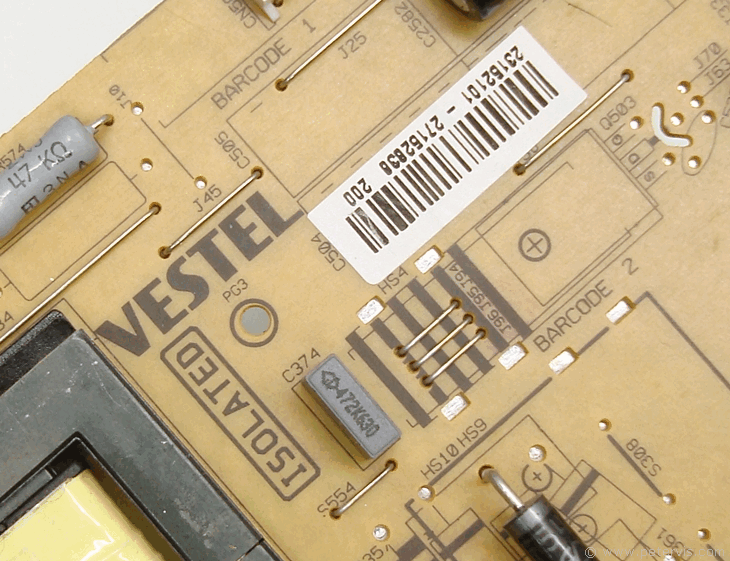
This power board was used in hundreds of different makes and models of televisions well-known and unheard of, covering high-end and low-end designs. This particular version came from a Finlux television and has barcode 23152101-27152838-200. Other markings show the number 060913R6. It has conventional through-hole components on one side and SMD components on the other side. It uses two FQPF 7N80C and one P9NK-50ZFP, MOSFET transistors, for the switched mode power supply circuits.
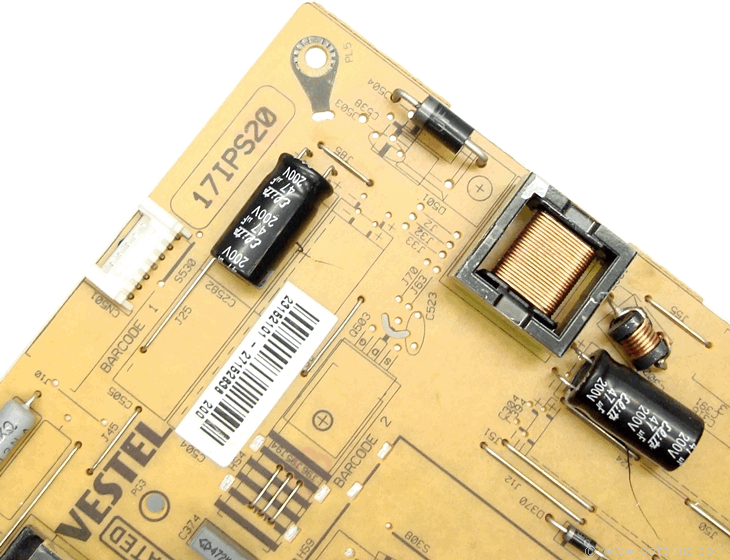
Servicing should of course be undertaken only by qualified engineers as this board contains high voltages of up to 400 V DC. The question many engineers may be wondering is whether it is worth repairing it as there seems to be many solutions on the Internet, ranging from replacing the complete board (approximately £50), to buying a repair kit (approximately £12), to replacing just one transistor (approximately £5). If your diagnostic skill was not good enough, then you could end up wasting a lot of time and money. Being the Luke Skywalker of technology, I tend to say that nothing is ever really gone, because if you are willing to spend enough time and money, then even the dead can be resurrected. However, simply because you can, does not always follow that you should!
The first point to consider is that you could pick up the latest 40-inch LED television (probably manufactured by VESTEL) for as little as £200 including postage (+ free 5-year manufacturer’s warranty on some brands) on eBay. It has modern facilities, and the picture will be significantly better than your 5+ year old television, because technological developments move at a very fast pace. Therefore, the question to ask is why on earth you would want to spend up to fifty pounds, plus a day of your time, on an old piece of outdated technology that is well past its useful service life. Even if you manage to repair it, there may be many other components on the board that are coming to the end of their useful life, so it may break again after a few months. Hence if your television is more than five years old, I would recommend buying a new one, and taking the old one to your local recycling centre.
A television is of course a very complicated piece of technology with many components that have a limited lifespan. Here we look at some of the main components that can fail, and in the following pages of this article I shown some of the subsystems worth checking if you happen to be an engineer with more time than money on your hands.
The power MOSFETS operate at high voltages switching 400 V DC, and they tend to operate hot and have a limited life. Of course, the larger the heatsink, the better chance it has of having a long service life.
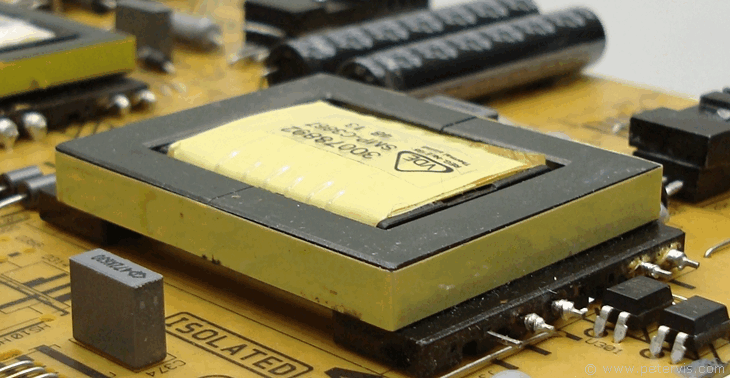
The chopper transformer also handles high voltages and operates warm, and they do not last forever either. Eventually, the heat melts the enamelled insulation of the coils and it shorts and dies. Alternatively, a sudden high voltage load due to a short elsewhere can also cause the coil to go open. Since people like slim profile televisions, their design has become progressively thinner. There is very little heatsinking and the coils have to be thinner as well. Hence if you can get five years of useful life, then consider yourself lucky!
Whilst Light Emitting Diode (LED) technology is much more reliable than the old CCFL tube technology, problems with backlighting can still occur. This is because they have to use a large array of independent diodes to cover the whole screen area. The larger the screen is, the more LEDs they have to use to produce a uniform brightness backlight. These diodes are often connected in a single string and if one diode goes short, or open, then your TV will not start and the standby light will blink. In the 17IPS20, the designers have incorporated SMD fuses, which hopefully blow first before damage to the expensive power supply components occur. However it is not unheard of to discover catastrophic damage to power supply components blowing up the LED driver transistor. There is of course a way to diagnose this shown in the following pages.
It is possible to replace the LED array, or parts of it as a 40-inch screen usually consists of five strips, with approximately nine diodes per strip. They usually stick these strips to the inside metal screen with double-sided sticky tape. However in order to gain access to them, you are going to have to take the screen apart and this brings a new dimension of problems with it. The LCD screen layer is extremely thin and easy to break if you bend it in the slightest. At the factory, they usually use a robot with an air vacuum to lift the screen for fitting into the frame. If you are doing the repair at home on the carpet floor, then it is a foregone conclusion that it will break as you lift it up. Behind the LCD layer, there are additional layers of translucent material that diffuses the light. Assuming you are able to successfully dismantle the screen and gain access to the LEDs behind the metal screen, you still then have to determine which strip in the array has the faulty diode. As you can see, it gets progressively messy and complicated as you try to repair it. Hence, this is another reason to buy a new TV instead.
Finally, the LED Driver MOSFET which switches as much as 80 V to the LED array does not last forever either. If this driver transistor goes short, then it is possible for 80 V to pass through its gate junction into pin 14 of the MP3394 integrated circuit, and blow that up as well. Whilst there are kits available to replace this IC and the driver transistor, these SMD components require very delicate soldering skills and a rework soldering station. In addition, there are no guarantees that replacing this IC will solve the problem!
In the following pages I look at various subsystems of this board and diagnostics to determine the most cost-effective option so money is not wasted. However it is a complex board and does not exhaust every possibility.
Other Components on the Power Board
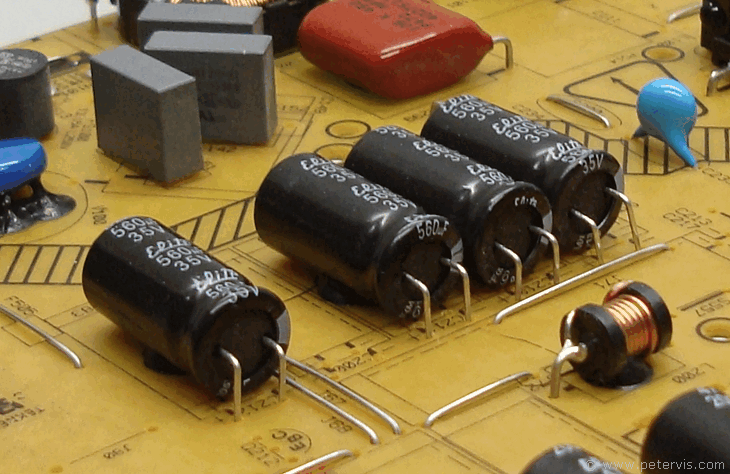
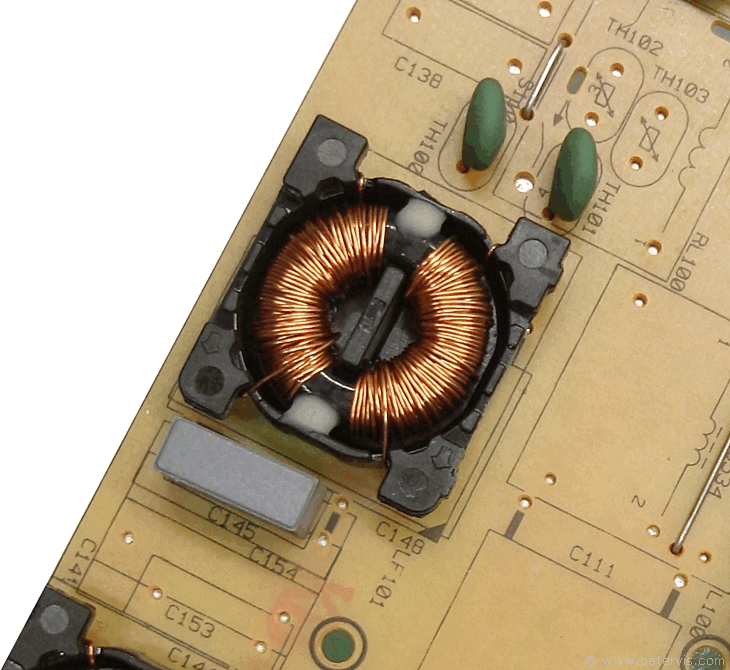
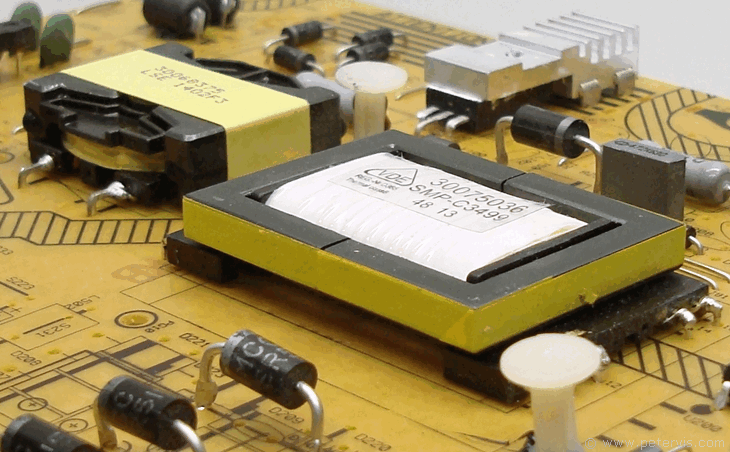
This Article Continues...
17IPS20TV with 17IPS20 Blinks and Does Not Start
FQPF 7N80C MOSFET Test
MP3394/MPS3394S LED Driver Diagnostic
17IPS20 Repair
